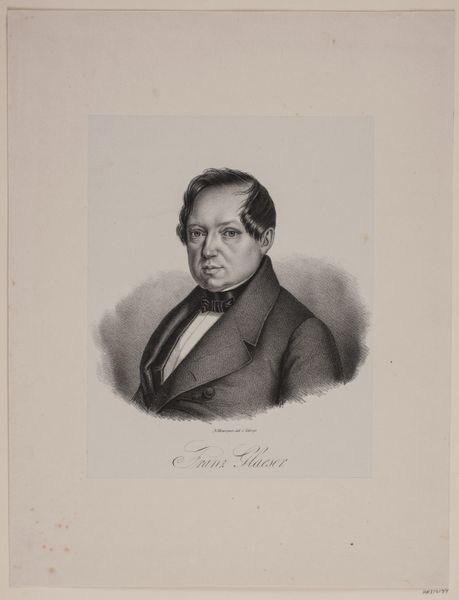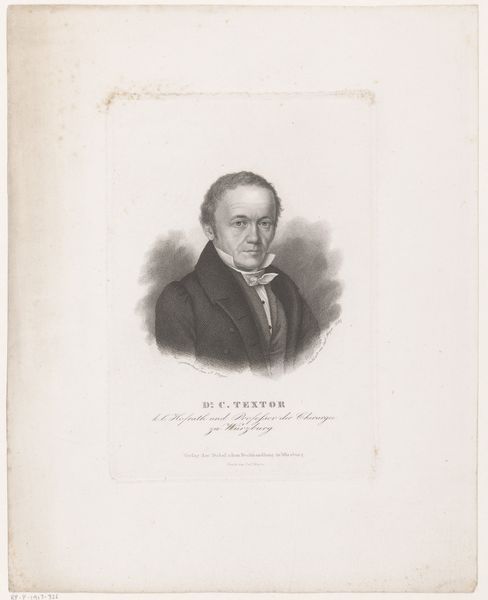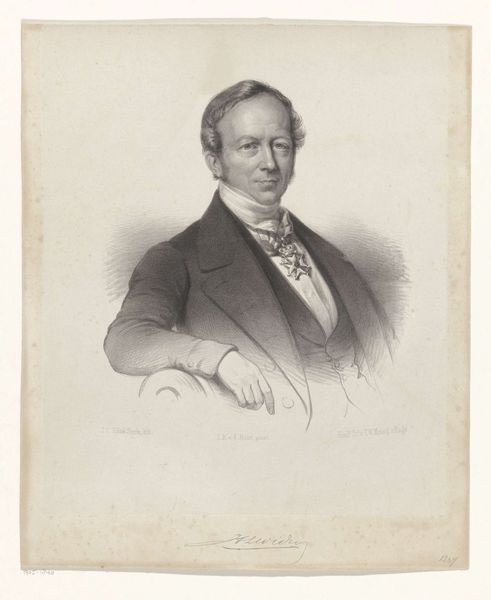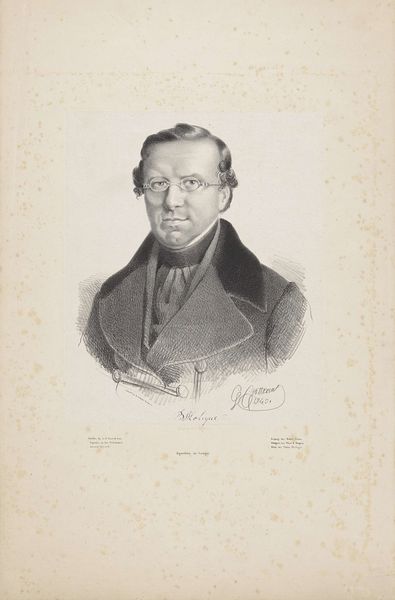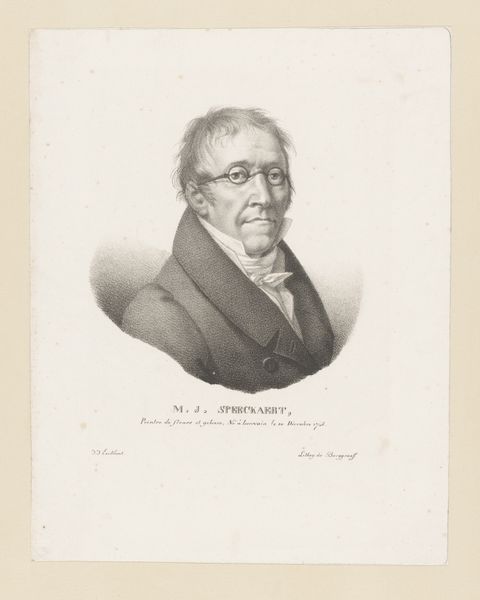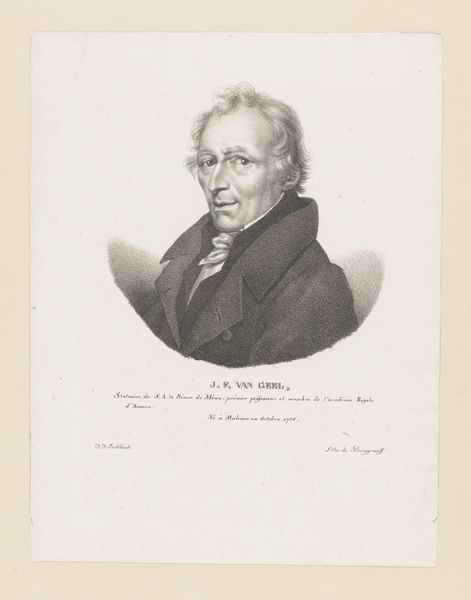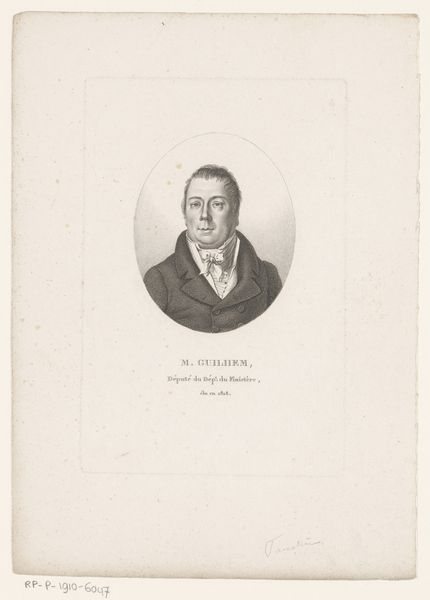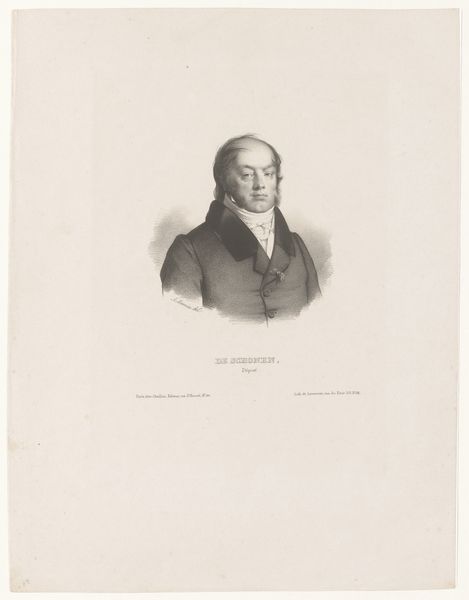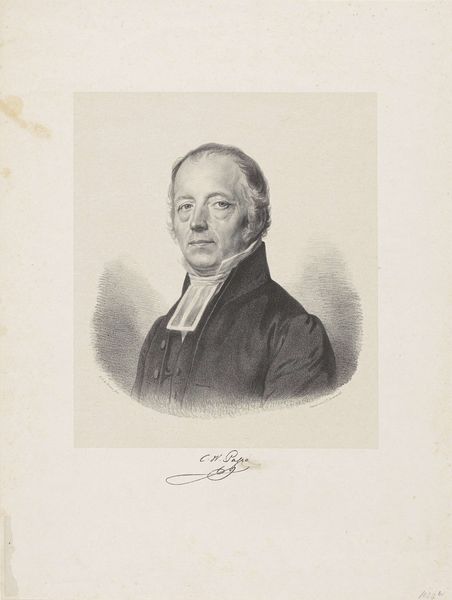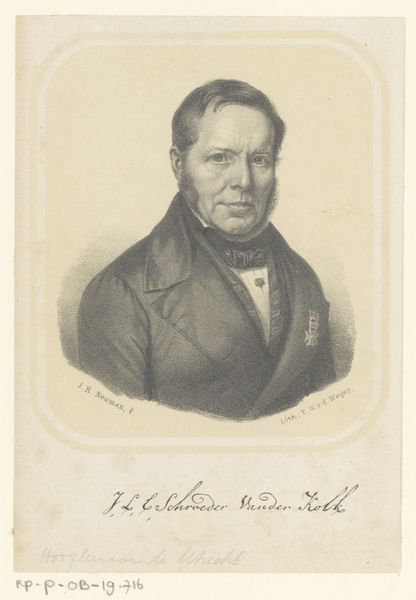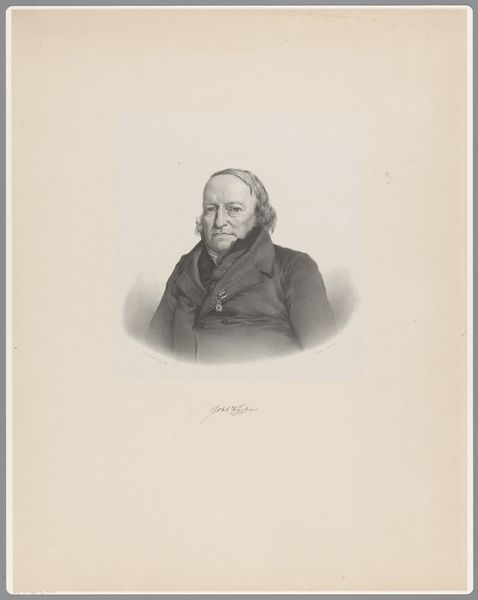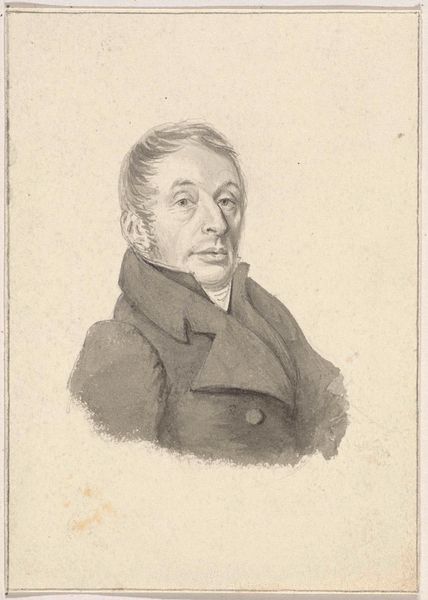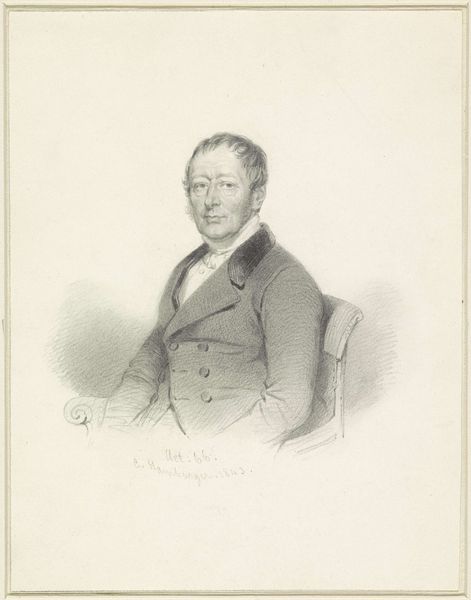
lithograph, print
#
portrait
#
lithograph
# print
#
portrait drawing
#
history-painting
#
realism
Dimensions: 361 mm (height) x 275 mm (width) (bladmaal)
Editor: This is “Bonaparte Borgen,” a lithograph from 1843 by Geskel Saloman, currently residing at the SMK. I’m struck by how serious he looks; there's a palpable weight in his gaze. What can you tell me about this work? Curator: Notice how the lithograph medium allows for intricate detail, especially in rendering his expression. Consider what "Bonaparte" evokes – images of Napoleon, power, ambition. Yet, the portrait is of a man of apparent humility, Borgen, a man of letters, staring back. Do you see a tension between the namesake and the portrayal? Editor: I do, now that you point it out. It almost seems ironic, naming him Bonaparte, yet portraying him so… reserved. Was this a common practice? Curator: Naming wasn't ironic but intentional: the echoes of past glories, perhaps a yearning for such heroic narratives in Borgen himself or, in society in general. See the use of realism? It elevates Borgen's position, infusing the everyman with heroic traits, linking him, subtly, with Napoleon’s grandeur. What might this elevation mean for Danish national identity at this time? Editor: So it’s about linking Borgen to a powerful image, perhaps imbuing him with a sense of historical importance through visual association? It seems less about individual likeness and more about cultural aspirations. Curator: Precisely. And, recall lithography democratized image production. Therefore, wide circulation of these heroic symbols helped influence collective identity. How does that idea resonate with you? Editor: I guess I hadn’t thought about that, or of art’s reach in constructing a sense of who ‘we’ are. Thanks, it definitely shifts my understanding!
Comments
No comments
Be the first to comment and join the conversation on the ultimate creative platform.

